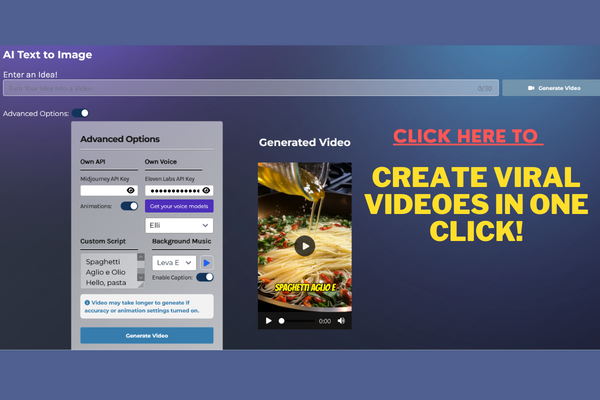
Welcome to our comprehensive guide, where we will dive deep into the world of Yoast SEO Tutorial 2023. As fellow beginners in the realm of WordPress SEO, we understand the challenges that come with trying to navigate through the intricacies of optimizing your website for search engines. Fear not, for we have curated the ultimate guide to help you master Yoast SEO and take control of your online presence. Join us as we unravel the mysteries of this powerful tool, providing you with practical tips and step-by-step instructions along the way. So, let’s embark on this journey together and unlock the potential of mastering WordPress SEO with Yoast!
The Ultimate Guide to Yoast SEO Tutorial 2023 – Mastering WordPress SEO for Beginners
Introduction
Welcome to the ultimate guide to Yoast SEO tutorial 2023! In this comprehensive tutorial, we will delve into the powerful world of Yoast SEO, the leading plugin for optimizing WordPress websites. Whether you’re a beginner or have some experience with SEO, this tutorial will equip you with the knowledge and tools to master WordPress SEO. So, let’s get started and unlock the potential of your website!
Table of Contents
- What is Yoast SEO?
- Installing and Configuring Yoast SEO
- Downloading Yoast SEO
- Installing the Plugin
- Activating Yoast SEO
- Optimizing Pages and Posts
- Using Focus Keywords
- Writing SEO-Friendly Content
- Setting SEO Title and Meta Description
- Utilizing Heading Tags
- Enhancing Readability
- Optimizing Images with Alt Text
- Maximizing Internal Links
- Advanced Features of Yoast SEO
- Integrating with the Google Search Console
- Leveraging Rich Snippets
- Connecting with Pinterest
- Submitting to Bing Webmaster Tools
- On-Page Optimization Techniques
- Keyword Placement and Density
- URL Optimization
- Crafting Compelling Meta Descriptions
- Optimizing Heading Structure
- Utilizing Sitemaps
- Technical Optimization with Yoast SEO
- SSL and HTTPS Implementation
- XML Sitemaps Configuration
- Robots.txt Optimization
- Handling Canonical URLs
- Improving Website Speed and Performance
- Frequently Asked Questions (FAQs)
- What is Yoast SEO?
- Why is Yoast SEO important for WordPress websites?
- How do I set up Yoast SEO on my website?
- Can Yoast SEO improve my website’s visibility in search results?
- Is Yoast SEO compatible with other SEO plugins?
- Conclusion
What is Yoast SEO?
Yoast SEO is a powerful plugin designed to optimize WordPress websites for search engines like Google, Bing, and Yahoo. With over 5 million active installs and positive reviews, Yoast SEO is the oldest and most popular SEO plugin available. It empowers website owners and content creators to enhance their website’s visibility in search results, attracting more organic traffic.
Installing and Configuring Yoast SEO
To start using Yoast SEO, you need to install and configure the plugin. Follow these steps:
- Downloading Yoast SEO: Visit the WordPress plugin repository or the Yoast website to download the Yoast SEO plugin.
- Installing the Plugin: Log in to your WordPress dashboard, navigate to “Plugins,” click “Add New,” and upload the downloaded plugin file.
- Activating Yoast SEO: After successful installation, activate the Yoast SEO plugin to start benefiting from its features and functionalities.
Optimizing Pages and Posts
Yoast SEO allows you to optimize individual pages and posts on your website. By implementing SEO best practices, you can improve the visibility and ranking of your content in search engine results. Here are some essential optimization techniques:
- Using Focus Keywords: Choose a focus keyword for each page or post, and Yoast SEO will analyze its usage and provide suggestions for improvement.
- Writing SEO-Friendly Content: Create content that is valuable, engaging, and relevant to your target audience. Incorporate the focus keyword naturally throughout the article.
- Setting SEO Title and Meta Description: Craft compelling SEO titles and meta descriptions that accurately represent the content and entice users to click.
- Utilizing Heading Tags: Organize your content using appropriate heading tags (H1, H2, H3, etc.) to help search engines understand the structure and relevance of your content.
- Enhancing Readability: Consider the readability of your content by using shorter sentences, paragraphs, and incorporating bullet points or numbered lists when appropriate.
- Optimizing Images with Alt Text: Assign descriptive alt text to images, helping search engines understand the context and relevance of the visuals.
- Maximizing Internal Links: Internal links improve website navigation and provide additional context to search engines. Include relevant internal links within your content.
Advanced Features of Yoast SEO
Yoast SEO offers advanced features that can further enhance the optimization of your website. Let’s explore some of these features:
- Integrating with the Google Search Console: Connect Yoast SEO with the Google Search Console to access valuable insights and data about your website’s performance in search results.
- Leveraging Rich Snippets: Yoast SEO supports rich snippets, which enhance the appearance of your content in search results. Rich snippets can increase click-through rates and attract more organic traffic.
- Connecting with Pinterest: Integrate Yoast SEO with Pinterest to allow for better visibility of your website content on this visual discovery platform.
- Submitting to Bing Webmaster Tools: Easily submit your website’s sitemap to Bing Webmaster Tools through Yoast SEO, ensuring your website is indexed by Bing.
On-Page Optimization Techniques
Optimizing your website’s pages and posts is crucial for better search engine visibility. Here are some on-page optimization techniques you can implement using Yoast SEO:
- Keyword Placement and Density: Place your focus keyword in strategic locations such as the title, URL, headings, and throughout the content. However, ensure the density is natural and doesn’t compromise readability.
- URL Optimization: Craft SEO-friendly URLs that include the focus keyword and accurately represent the content of the page or post.
- Crafting Compelling Meta Descriptions: Write persuasive meta descriptions that provide a concise summary of your content and entice users to click.
- Optimizing Heading Structure: Use an appropriate hierarchy of heading tags (H1, H2, H3, etc.) to enhance the organization and readability of your content.
- Utilizing Sitemaps: Generate XML sitemaps using Yoast SEO to help search engines crawl and index your website more efficiently.
Technical Optimization with Yoast SEO
Optimizing the technical aspects of your website is crucial for better indexing and crawling by search engines. Let’s explore some technical optimization techniques you can implement using Yoast SEO:
- SSL and HTTPS Implementation: Ensure your website is secure by implementing an SSL certificate and using HTTPS. Yoast SEO provides features to easily switch from HTTP to HTTPS.
- XML Sitemaps Configuration: Configure your XML sitemaps using Yoast SEO, ensuring important pages are included, and unnecessary ones are excluded.
- Robots.txt Optimization: Customize the robots.txt file using Yoast SEO to control how search engines crawl and index your website.
- Handling Canonical URLs: Specify canonical URLs using Yoast SEO to avoid duplicate content issues and guide search engines to the preferred version of your web pages.
- Improving Website Speed and Performance: Yoast SEO offers features to improve website speed, such as enabling schema.org structured data in JSON-LD format and optimizing your page’s load time.
Conclusion
Congratulations! You have completed the ultimate guide to Yoast SEO tutorial 2023. You now possess the knowledge and tools to master WordPress SEO and optimize your website for better search engine visibility. Remember to regularly update and monitor your SEO practices to stay ahead in the ever-evolving world of search engine optimization. Happy optimizing!
Frequently Asked Questions (FAQs)
-
What is Yoast SEO?
Yoast SEO is a free plugin that helps optimize WordPress websites for search engines like Google, Bing, and Yahoo. It provides various features and tools for on-page and technical optimization. -
Why is Yoast SEO important for WordPress websites?
Yoast SEO allows website owners to enhance their website’s visibility in search results, attract more organic traffic, and improve overall SEO performance. -
How do I set up Yoast SEO on my website?
To set up Yoast SEO on your website, you need to download and install the plugin, activate it, and configure the settings according to your preferences. -
Can Yoast SEO improve my website’s visibility in search results?
Yes, by implementing SEO best practices and utilizing the features of Yoast SEO, you can improve the visibility and ranking of your website in search engine results. -
Is Yoast SEO compatible with other SEO plugins?
While Yoast SEO is a comprehensive SEO plugin that covers various aspects of optimization, it may be compatible with other SEO plugins. However, it’s advisable to use only one SEO plugin to avoid conflicts and ensure optimal performance.

